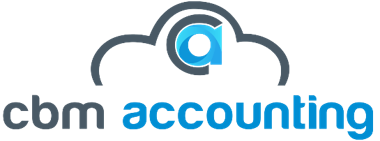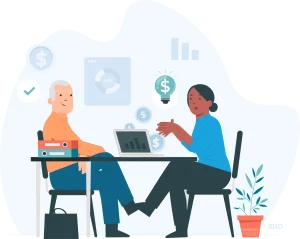On October 31, 2020, the government’s Coronavirus Job Retention Scheme will end. Employees at hard-hit firms were placed on furlough as part of the scheme, which was implemented in March.
Table of Contents
- On November 1, a new job support scheme will begin:
- Assistance for self-employed continues:
- Other Ways of Assistance for Businesses:
- Managing the conclusion of the furlough scheme:
- September:
- October:
- Customizable Furlough scheme:
- Getting employees back to work:
- Procedures for Redundancy:
- Taking The Necessary Steps To Get Things Back To Normal:
- We can help you get back on track with your business:
On November 1, a new job support scheme will begin:
Following weeks of anticipation, the Chancellor revealed the replacement to the vacation plan as part of a Winter Economy Plan on September 24. The ‘Job Support Scheme’ will begin on November 1st and will last for six months.
The following are the most important aspects of the new plan:
- Companies that are unable to rehire full-time staff will benefit from the scheme.
- Employees must work at least one-third of their regular hours to be eligible. The government can raise the minimum amount of hours worked after three months.
- The government and the employer will each pay one-third of the remaining earnings for the hours not worked. This indicates the employee will receive at least 77% of their salary.
- Employees must have worked for the company since at least September 23. They can be added and removed from the scheme at any time, and they can work various hours. At least seven days must be covered by each working arrangement.
- The payment will be based on an employee’s regular wage, with the monthly government contribution limited to £697.92.
- While an employer is claiming a Jobs Support Scheme award on their behalf, employees cannot be fired or placed on notice.
Small and medium-sized enterprises with less than 250 employees are eligible for the scheme. Employees must have “viable occupations” to be eligible for the scheme. Businesses in presently closed industries, such as nightclubs, may not be eligible.
Large corporations are also eligible, but only if they can show that their income has decreased because of the coronavirus.
Assistance for self-employed continues:
Self-employed persons will be eligible for a lump-sum award of 20% of their projected earnings under a similar scheme:
- Those who qualify for the Self Employment Income Support Scheme Award will be eligible for the grant.
- From November until the end of January, the award will cover three months’ worth of profits.
- It will cover 20% of average monthly profits up to £1,875, up to a maximum of £1,875.
- Depending on the conditions, a second award for the self-employed may be available from February 2021 until the end of April 2021.
Other Ways of Assistance for Businesses:

The Job Support Scheme is part of the Chancellor’s Winter Economic Plan, which includes a broader package of initiatives. These are some of them:
- Bounce Back Loan repayment periods would be extended from six to ten years.
- Lenders participating in the Coronavirus Business Interruption Loan Scheme will be permitted to extend loan terms from the existing limit of six years to ten years.
- The coronavirus loan deadline has been extended to the end of November.
- Struggling firms can opt to pay just interest for six months, and those in “serious difficulties” can request to have their repayments suspended entirely for six months.
- The emergency VAT reduction of 15% for the tourist and hospitality businesses will be extended until March 31, 2021.
- Businesses who postponed paying their VAT invoices will be allowed to do so in 11 smaller, interest-free installments.
- Self-assessment income earners would be allowed extra time to pay in installments if they need it.
The government will also provide several subsidies to firms to reduce unemployment:
- Every furloughed employee who is kept on until at least the end of January will get £1,000 in compensation.
- Every out-of-work 16-24-year-old who is granted a ‘high-quality’ six-month work placement will get £1,500.
- Until the end of January, each apprentice under the age of 25 will get £2,000, while those above the age of 25 would receive £1,500.
Managing the conclusion of the furlough scheme:
Employers with furloughed staff will have to handle the final phases of the Coronavirus Job Retention Scheme (CJRS) through the rest of September and October before the new Job Support Scheme starts.
September:
- Furloughed employees will get 70% of their salary up to a monthly limit of £2,190 from the government.
- Employers will contribute 10% of salaries to give furloughed workers with 80% of their income up to a monthly limit of £2,500.
- Employers will cover the costs of furloughed employees’ NI and pension contributions.
October:
- Furloughed employees will get 60% of their salaries, up to a monthly ceiling of £1,875, from the government.
- Employers will pay 20% of salaries to furloughed workers, up to a monthly maximum of £2,500.
- Employers will cover National Insurance and pension contributions for furloughed staff.
Customizable Furlough scheme:
Employees who were on a flexible furlough scheme – or working part-time – throughout September and October can stay on such scheme until the end of the month. Employers can deduct contributions from their employees’ pay.
Employers file claims for non-worked hours using the same CJRS mechanism and the claim must cover a minimum of seven calendar days.
Employers may be required to publish a new contract of employment if employees return part-time under the flexible furlough scheme.
The experienced CBM Accounting team can assist you with creating employment contracts and/or new employee handbooks, as well as implementing new policies. We may work with small or big businesses to create a new company handbook or design an employment contract that is up to date with current legislation and satisfies the needs of the firm.
Getting employees back to work:
Employers who return workers to full-time employment after exiting the CJRS scheme will get a single payment of £1,000 for each returning employer they maintain until January 2021. Under the new Job Support Scheme, that portion of the scheme will be preserved.
Procedures for Redundancy:
Employers who are unable to meet the scheme’s obligatory contributions may be forced to contemplate redundancies or other measures.
Under the present CJRS arrangement, it is permissible to make furloughed employees redundant. Redundancy compensation, on the other hand, must be computed using regular wage rates rather than furloughed wages.
- Employees who have worked for more than two years and have been laid off are typically entitled to a statutory redundancy payout depending on their length of service, age, and income, up to a statutory limit.
- Employees who are furloughed will receive statutory redundancy compensation based on their usual salaries, rather than a lower furlough rate, under new government law that went into effect on July 31, 2020.
Taking The Necessary Steps To Get Things Back To Normal:
While the government has created a new plan to assist businesses that are unable to restore their personnel, other businesses may be contemplating how to resume operations while keeping expenses low.
Even though redundancy appears to be the most obvious way to cut labor expenses, companies have alternative options based on their circumstances.
If other sections of a company are busy yet understaffed, redeployment may be a possibility. This may necessitate retraining and contract modifications.
If there is a significant likelihood of a company upturn, reducing the hours of full-time employees for a limited time may be a possibility.
Pay cuts for a limited time might save money if employees accept the rationale for the reduction. The new pay levels, however, must not be less than the National Minimum Wage.
Unpaid leave for a limited length of time can also help cut costs, but only if employees agree and understand.
We can help you get back on track with your business:
We have skilled and qualified accountants, business consultants, and legal attorneys who can help if your firm is still suffering – or if you simply need some advice.
CBM Accounting can assist you with all areas of forecasting, tax, and resolving any COVID-19-related financial difficulties.
We also have a staff of skilled lawyers that can assist with any Accounting and financial services connected to employment law. For example, assisting with the creation or revision of new or amended employment contracts or business handbooks, resolving employee conflicts, and giving health and safety advice.
Keep in touch with CBM Accounting for further information on the furlough plan and other topics.





